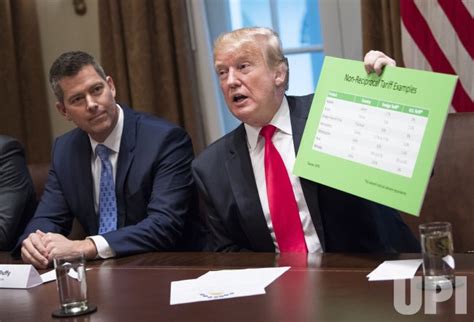The world was shaken as President Donald Trump’s administration unveiled a bold move to impose “reciprocal” tariffs on nearly all its trade partners, stirring up a hornet’s nest of retaliatory actions and economic turmoil.
“For decades, our country has been looted, pillaged, raped, and plundered by nations near and far, both friend and foe alike,”
proclaimed Trump in a fervent statement at the White House. With these tariffs, the U.S. aimed to bolster domestic manufacturing and prioritize American interests above all else.
However, this aggressive stance triggered swift responses from major trading allies. European Commission President Ursula von der Leyen emphasized that Europe had not initiated the conflict but would retaliate if necessary. Canada pledged counter-tariffs while Mexican President Claudia Sheinbaum announced alternative economic strategies instead of tit-for-tat tariffs.
China, South Korea, and Japan joined forces against the U.S., signaling rare solidarity in the Indo-Pacific region. This united front hinted at potential challenges for Washington’s ambitious trade policies.
The imposition of reciprocal tariffs marked a significant shift in U.S. trade strategy since the 1930s—the era of heightened protectionism during the Great Depression. The White House anticipated generating an annual revenue boost of $600 billion from these measures but faced concerns about escalating consumer prices and global inflation rates.
White House trade advisor Peter Navarro defended the move as a means to encourage companies to relocate operations back to American soil—a strategy aimed at revitalizing factory jobs in the country.
Economists warned of potential pitfalls as markets reacted nervously to the uncertainty unleashed by this new phase in Trump’s second term agenda. The previous tariff escalations on key trading partners like Canada, Mexico, China, Europe—coupled with threats against Venezuelan oil buyers—had already set off waves of apprehension across global financial centers.
Meanwhile, Israel made headlines with Prime Minister Benjamin Netanyahu announcing plans for a security corridor in Gaza to pressure Hamas into releasing hostages amid ongoing tensions in the region. However, international legal experts raised alarms over Israel potentially targeting civilians deliberately—an act that could have severe legal repercussions.
In Myanmar—a nation grappling with internal strife—the ruling junta declared a temporary cease-fire with rebel groups following a devastating earthquake that exacerbated humanitarian crises in conflict zones across the country. This fragile truce offered hope for aid delivery amidst ongoing turmoil between military factions and ethnic minorities.
European defense ministers convened in Paris to discuss reinforcing security support for Ukraine against Russian aggression—a move seen as crucial for stabilizing Eastern European geopolitics amidst heightened tensions between Moscow and Western powers.
As Dublin faced an unusual challenge involving its iconic Molly Malone statue being groped by tourists leading to bronze discoloration , it highlighted how even symbols can become casualties when human behavior crosses boundaries without regard for cultural sensitivities or historical significance.
Amidst these global events unfolding on multiple fronts—from trade wars to territorial conflicts—it becomes evident that diplomatic finesse coupled with strategic foresight is essential to navigate turbulent waters where every decision can have far-reaching implications beyond borders.

